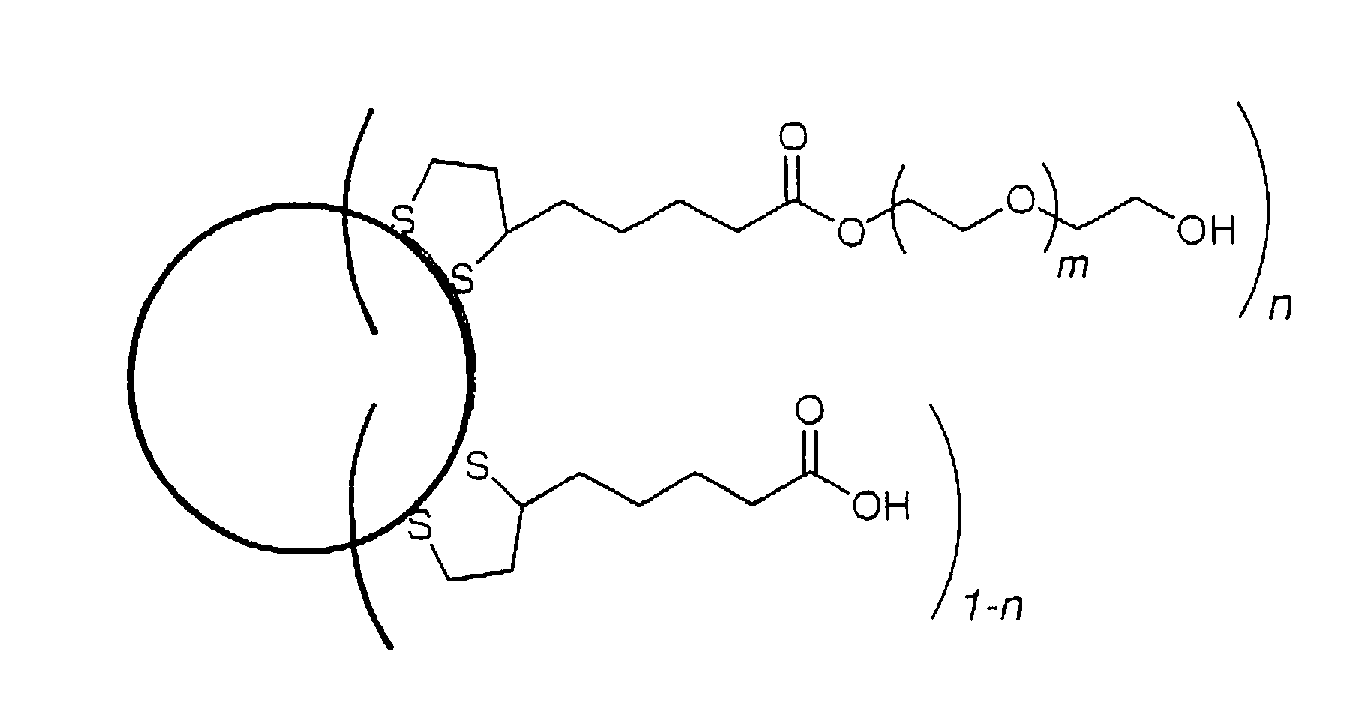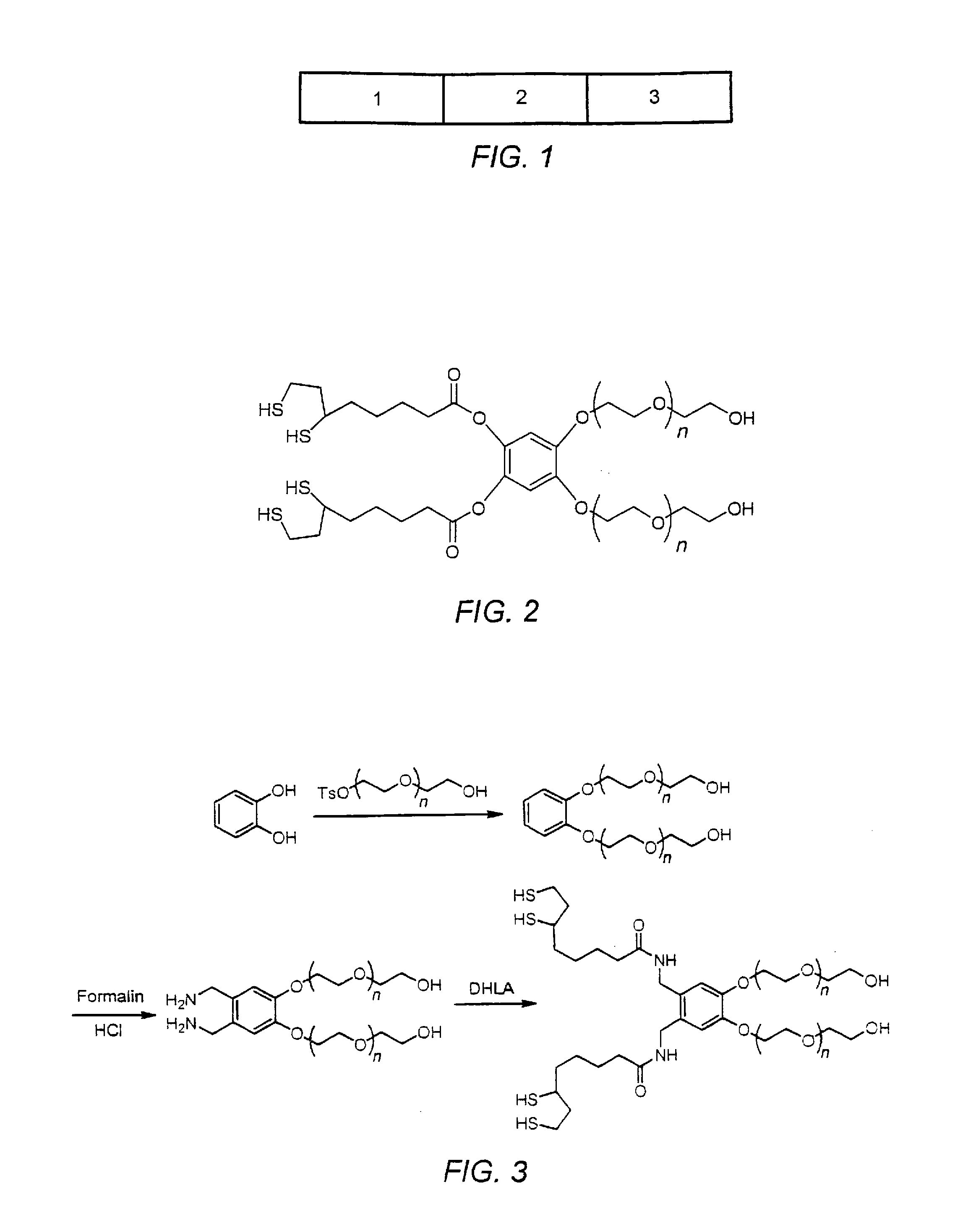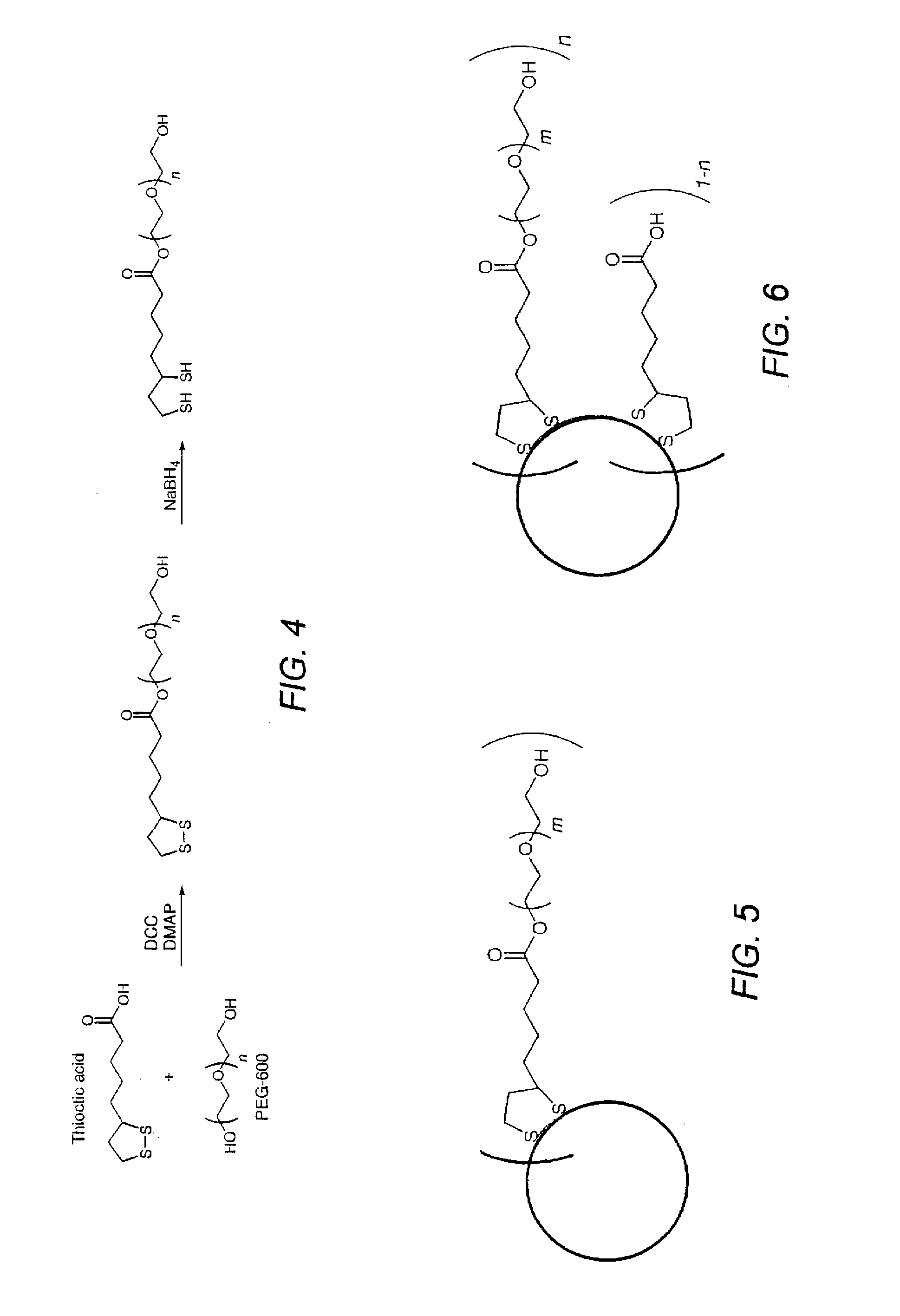Field of modular multifunctional ligands
a multifunctional, modular technology, applied in the field of multifunctional ligands, can solve the problems of poor temporal stability of nanoparticle ligands, inability to form direct covalently linked nanocrystal-biomolecule conjugates, and restricted operation in basic environments, and achieve the effect of wide ph stability and the ability to remain luminescen
- Summary
- Abstract
- Description
- Claims
- Application Information
AI Technical Summary
Benefits of technology
Problems solved by technology
Method used
Image
Examples
Embodiment Construction
[0020] This invention pertains to novel surface ligands, preparation of the ligands, colloidal nanoparticles and colloidal bioconjugates to arrive at water-soluble semiconducting nanoparticles through the use of one or more surface ligands that may be conjugated to additional compounds, especially biomolecules. The invention is characterized by the use of specific ligands that are attached to nanoparticles and impart water-solubility and numerous other functions. These ligand agents are chosen from groups consisting of multi-dentate or tooth-like thiol based or other complexing agents that bear hydroxy-terminated poly(ethylene glycol) or other hydrophilic groups of varying lengths. Such surface ligands can also be modified with amino, carboxylic acid and other functionalities, thus extending their usefulness in more elaborate conjugation schemes. Mixtures of these functionalized and unfunctionalized ligands can be further employed to design and prepare more highly structured systems...
PUM
| Property | Measurement | Unit |
|---|---|---|
| diameter | aaaaa | aaaaa |
| semiconducting | aaaaa | aaaaa |
| water-solubility | aaaaa | aaaaa |
Abstract
Description
Claims
Application Information
 Login to View More
Login to View More - R&D
- Intellectual Property
- Life Sciences
- Materials
- Tech Scout
- Unparalleled Data Quality
- Higher Quality Content
- 60% Fewer Hallucinations
Browse by: Latest US Patents, China's latest patents, Technical Efficacy Thesaurus, Application Domain, Technology Topic, Popular Technical Reports.
© 2025 PatSnap. All rights reserved.Legal|Privacy policy|Modern Slavery Act Transparency Statement|Sitemap|About US| Contact US: help@patsnap.com



